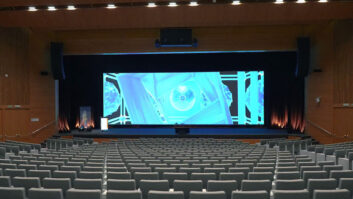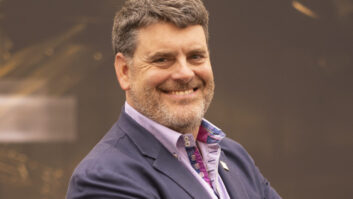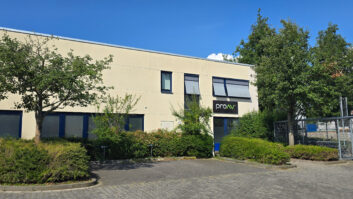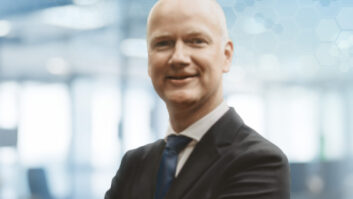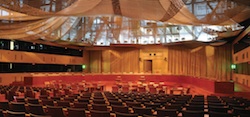
As befits an institution sitting at the very pinnacle of the EU legal system, the stakes for the new audiovisual integration at the European Court of Justice (ECJ) were as high as they possibly could be from day one. Not only did the AV systems have to complement the striking design of Parisian architect Dominique Perrault, they had to usher in a new era of court operations – particularly with regard to the use of video.
A landmark project many years in the planning and development, the ECJ facility, CJ4, is connected to a building that served as its previous home. An ambitious development distinguished by the extensive use of steel and timber, CJ4 comprises multiple conference rooms, a main gallery and two office towers.
Collectively, they will carry on the work that has preoccupied the ECJ since it was established in 1952, namely: interpreting European Community law for national courts and tribunals; reviewing the legality of EU institution acts; and ensuring that EU member states comply with their obligations under Community law.
Tender process
Given the substantial expectations for the project, it is unsurprising that a comprehensive tender process took place before conference system specialist Televic – working in conjunction with its Belgian integrator sister company Televic AV – was appointed to undertake the AV fit-out. Having won the tender towards the end of 2005, the partners spent approximately 18 months on design and specification before the construction process allowed them to commence on-site work in 2007. While the building was formally unveiled in December 2008, fine-tuning continued into the middle of 2009.
The scope of Televic/Televic AV’s responsibilities was extensive and encompassed eight conference rooms (plus two spaces in the old building) that had to be equipped with conference systems, loudspeakers, video cameras, display screens and more. At all times, the emphasis was on complementing Perrault’s highly defined objectives.
“It was very much an architect-driven project where everything relating to conference and multimedia had to fit in, but in such a way that it did not conflict with the architect’s vision,” confirms Bart Deschodt, sales manager conference at Televic.
His colleague Peter-Jan Vandamme served as conference installation project manager alongside Televic AV general manager Manu Gautot, who oversaw the system integration.
Before some specifics, a few statistics: across the 10 rooms in CJ4 and the existing building, 351 interpreter desks and 312 brass-plated delegate stations have been installed, employing 189 collapsible LCD screens and more than 1,000 OLED channel selectors.
Each conference room has its own local control space, while a central control room equipped with a roomcoupling matrix enables the creation of ‘virtual’ conference set-ups spanning multiple spaces.
The high aesthetic bar set for the project required Televic and Televic AV to devise a number of custom solutions.
For example, the need to display languages in the ISO format resulted in a custom integration based on Televic’s OLED channel selector, each of which incorporates an OLED display provided by Univision. The delegate stations also provided a notable challenge – specifically, the incorporation of Televic DML5500/XLR/A anti-GSM microphones, OLED channel selectors, LAN connections, power sockets and reading lights into stylish brass plates.
Video first
Arguably the greatest challenge concerned the implementation of video recording – a first in the distinguished history of the ECJ. Ultimately, Televic employed a solution based around Projecta screens, Panasonic cameras (main chamber) and Sony BRC-300 Broadband Remote Cameras (smaller rooms), but not before “many, many discussions with the court’s technical staff, judges and legal people”, recalls Gautot. “They had not used cameras before, so we had to spend time figuring out the most practical way to capture and relay images.”
Enabling hassle-free future expansion in each room was another priority, and to this end Televic specified its Confidea Wireless Conference Access Points for the wire-free addition of extra delegate units. TCP/IP operation allows seamless communication with the other members of the Televic conference ‘family’. This gives operators full control over the conference system from any PC connected to the conference network, and allows active and passive coupling among all conference rooms by means of a simple mouse click.
Overall system supervision is provided by customprogrammed AMX
controllers, while other core elements of the extensive AV infrastructure include Bose Professional loudspeakers, dZine digital signage (situated at the entrance to each room) and Tandberg 6000 MXP video codecs.
Reflecting on nearly four years of hard work, Gautot describes the ECJ installation as “a very important project for us. We had to implement a variety of AV techniques and technologies that were new to the ECJ while respecting the concept and design of the building – and this we have done. We are proud of the result and I am pleased to report that the feedback from the court has been very positive.”
